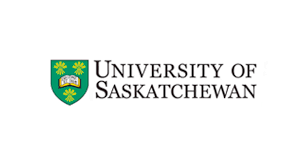University of Saskatchewan: USask researcher tracks impact of Saskatoon’s growth on wildlife
Urban sprawl, the outward growth of a city as new roads, housing developments, subdivisions and business districts are built, happens rapidly and represents near-permanent changes to the environment.
“A major environmental consequence of city growth is biodiversity loss,” said Harris who is working on a doctorate in animal and poultry science in USask’s College of Agriculture and Bioresources.
Biodiversity and biodiverse areas are extremely important for many reasons, including overall human health and well-being, and environmental health and sustainability, she said.
“However, loss of biodiversity is now occurring at a faster rate than at any time since the last historical extinction event that occurred millions of years ago, and we are currently in a global biodiversity crisis, as every year, more and more species become extinct,” Harris said.
Her research focus is to determine which species call Saskatoon home, and how they are using the city amid urban development and near-constant change.
Harris placed motion-activated cameras at different locations within Saskatoon, which captured 21,000 photos of about 10,000 wildlife appearances from September to December 2021.
The study is the first of its kind in Saskatoon to provide a large-scale, year-round platform for monitoring urban wildlife. Data collected will be used to build an urban wildlife databank for Saskatoon that can serve as a base to examine trends and patterns in wildlife appearances over time.
The first batch of photos identified 18 species, including black bears, porcupines, long-tailed weasels, moose, and beavers. Harris said the most common species appearing within Saskatoon city limits are white-tailed jackrabbits, red foxes, mule deer, and coyotes.
“My preliminary analyses are showing just how vital urban habitat connectivity and wildlife corridors—areas of land that allow an animal to move from one disconnected patch to another—are for wildlife biodiversity, with the least connected sites displaying very low levels of biodiversity,” said Harris.
“Furthermore, most wildlife species have shifted to behaving primarily nocturnally as a coexistence adaptation for living in densely populated urban areas.”
Harris said another interesting adaptation she has observed in urban settings is “human shielding”—a phenomenon that refers to prey animals remaining in areas with human activity because of a reduced risk of encountering a predator species.
Her project will continue to collect data until late 2023, but Harris hopes the monitoring platform continues to observe Saskatoon’s urban wildlife for decades to come. Her project is supervised by USask associate professor Dr. Ryan Brook (PhD).
“I come from a small northern community, The Pas, Manitoba, where I was raised to value and protect our natural resources and what they provide to us,” said Harris.
“Most people—myself included before I started this project—are truly unaware of the number of species that we share the city with. So, it’s been incredibly eye-opening and humbling at times, being able to not only discover this other world, but also share it with others.”
The study was supported by the Natural Sciences and Engineering Research Council of Canada and by numerous partner organizations including USask, the City of Saskatoon, the Meewasin Valley Authority, Wild About Saskatoon, the Saskatoon Forestry Farm Park and Zoo, Wanuskewin Heritage Park, and the Saskatoon Nature Society.

